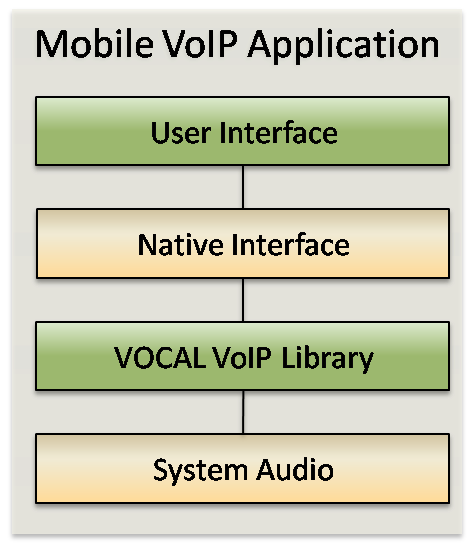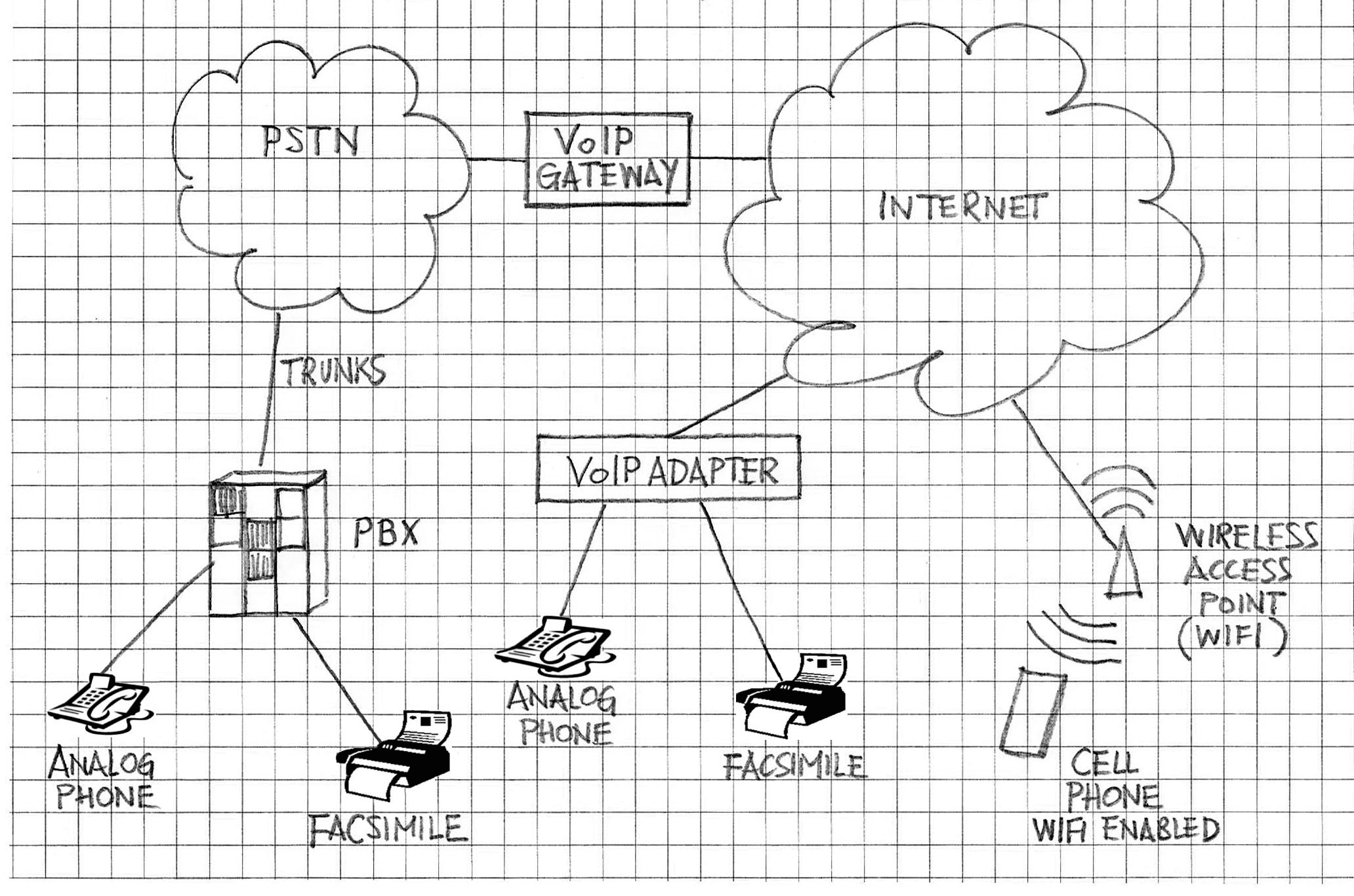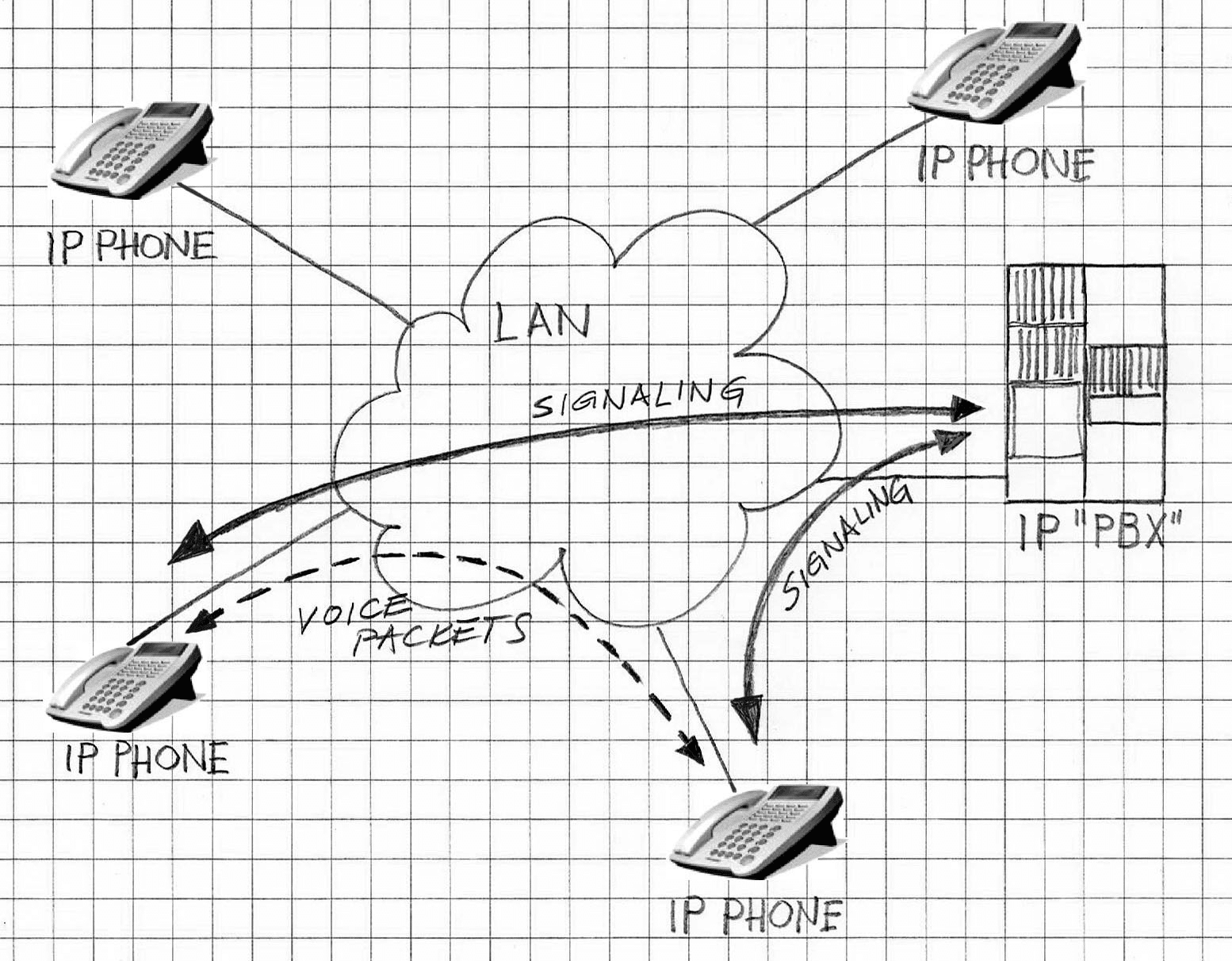Mobile VoIP (a.k.a. mVoIP) is a network and protocol extension of a Voice over IP (VoIP) network. Its main functional objective is to allow for a use of mobile phones to initiate and receive VoIP calls. In Figure 1, an example of a hybrid network is shown depicting different ways of accessing an IP network for the purpose of using voice services.
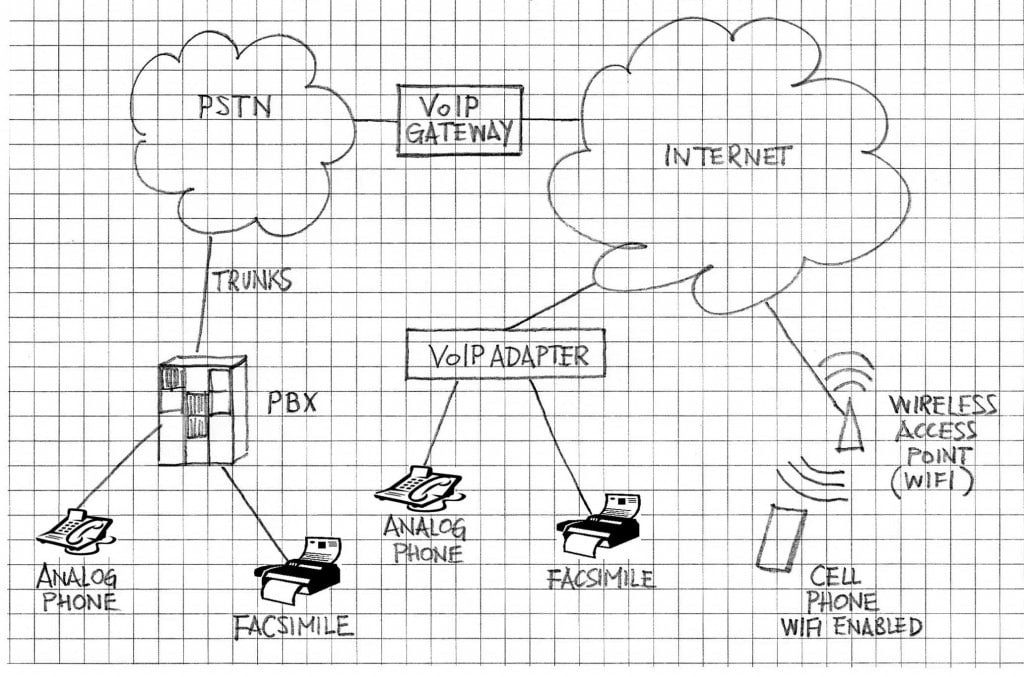
Most mobile phones sold today are sophisticated enough to use mVoIP. Furthermore, the availability of high-speed networks (WiFi, LTE, 3G, EDGE, WiMAX) means that there are now advantages in using mVoIP, opening up new business opportunities (cf. Ref. [1]). Typically mobile VoIP works with a cell phone’s 3G, 4G, GSM, or other Internet service to send/receive voice calls as digital signals over the Internet, satellite (Iridium, etc) and other links using voice over IP technology. Mobile VoIP phones can also take advantage of WiFi hotspots to eliminate the calling costs of a cellular voice or data plan. Cell phone users can use mobile VoIP service on their phone with the addition of mobile VoIP software. There is a variety of software solutions/applications that can “convert” a cell phone into a mobile VoIP phone.
The network protocol perspective to mobile VoIP is presented in several application research papers. One of them, Ref.[3], approaches the subject by pointing to one of the current implementations of MVOIP based on the ITU-T H.323 Multimedia standard. For illustration the H.323 protocol stack is shown in Figure 2. Message flow in a H.323 call starts with an exchange of call-establishment messages (as per Q.931) . Subsequently, message exchange and call capabilities negotiation is performed according to the communications control protocol ( H.245) . Then, channels for the exchange of realtime data are established and open. To complete the call opening for realtime data exchange (including time-critical voice and video streams), the Real Time Protocol (RTP) and Real Time Control Protocol (RTCP) are used.
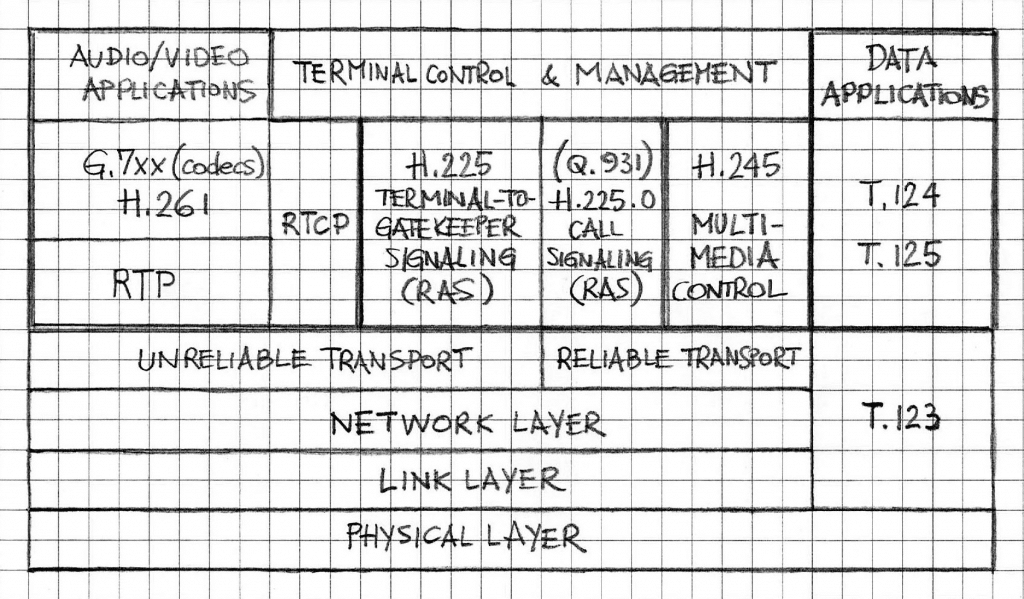
An H.323 endpoint can be on a wireless network such an IEEE 802.11 wireless LAN. (IEEE 802.11 standard and amendments provide the basis for wireless network products using the WiFi brand, cf. Figure 1).
In order to take advantage of the mobility provided by the wireless LAN, the host should be able to roam any point on the wireless network while continuing to maintain any calls in progress. For that, two levels of mobility support are required:
- Micro-mobility: support for seamlessly switching between wireless access points on the same subnet of the LAN network;
- Macro-mobility: support when the host moves into a new subnet; implies that this change has to be detected and a valid IP address for the new subnet to be acquired; the change of the IP address cannot cause the termination of ongoing VoIP.
Micro-mobility, as described above, is handled at the link layer by the 802.11 implementation. The macro-mobility scenario defines the problem to be solved by MVOIP. Handling this problem at the application level enables the application to respond in the most suitable way to the change in network address. In real-time applications, such as voice and video, that are sensitive to data transmission latency, a suitable response is to resume ongoing calls as quickly as possible.
Other aspects of mVoIP include its use in conjunction with a directory service (for address resolution), call handoff, mobility alert and IP update messaging, calling into mobile hosts (using in conjunction with dynamic directory infrastructure) and security and encryption support.
VOCAL’s MVoIP solutions provide a comprehensive mobile VoIP software library to develop custom MVoIP applications for cell phones, tablets and other mobile devices. Selected details are included in Ref.[4]). Contact us to discuss your mobile VoIP application with our engineering staff.
 VOCAL’s solution is available for the above platforms. Please contact us for specific supported platforms.
VOCAL’s solution is available for the above platforms. Please contact us for specific supported platforms.
REFERENCES
- On mobile VoIP
- VoIP Technologies, Shigeru Kashihara (Editor), INTECH 2011
- Mobile Voice over IP (MVOIP): An Application-level Protocol for Call Hand-off in Real Time Applications, G. Ayorkor Mills-Tettey and David Kotz, Proc. Of 21st IEEE Int. Perf, Comp. and Comm. Conf, pp 271-279, 2002
- MVoIP and Mobile VoIP Software

